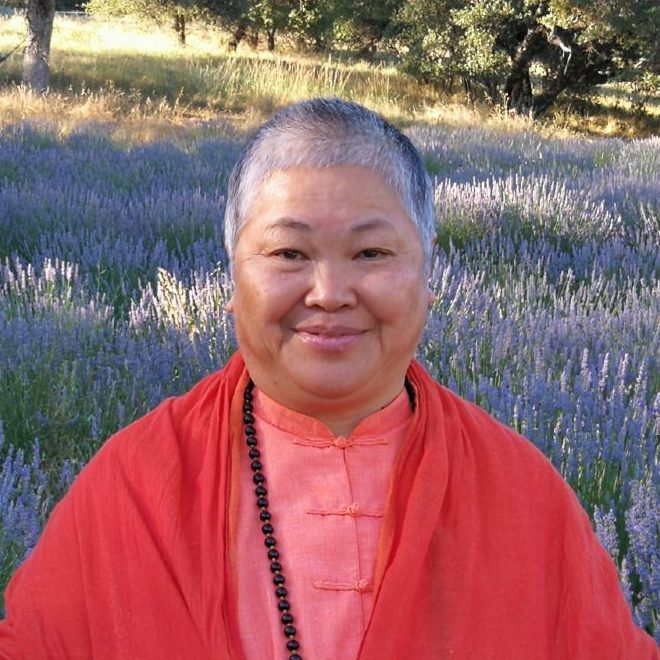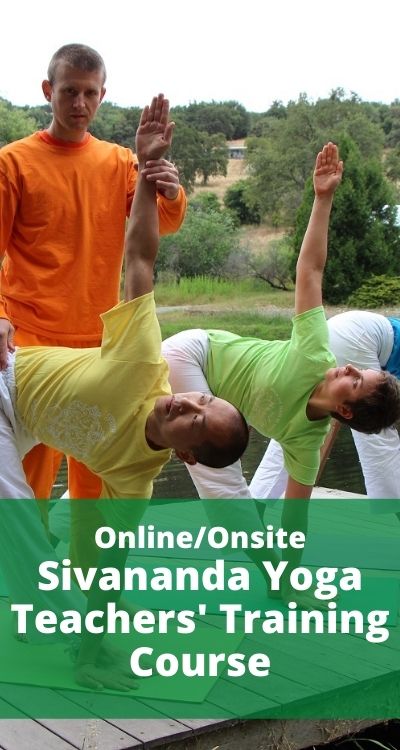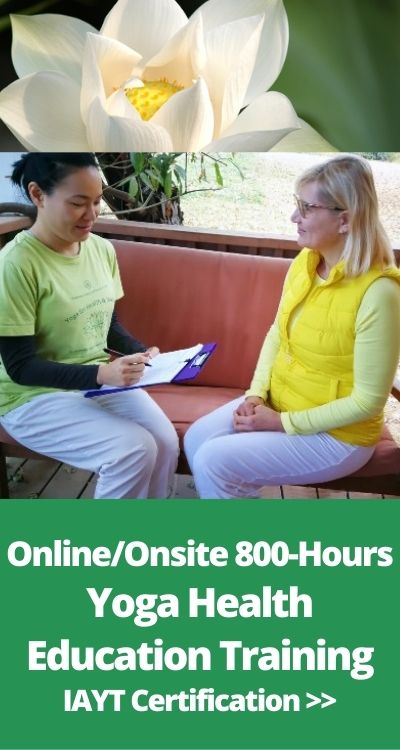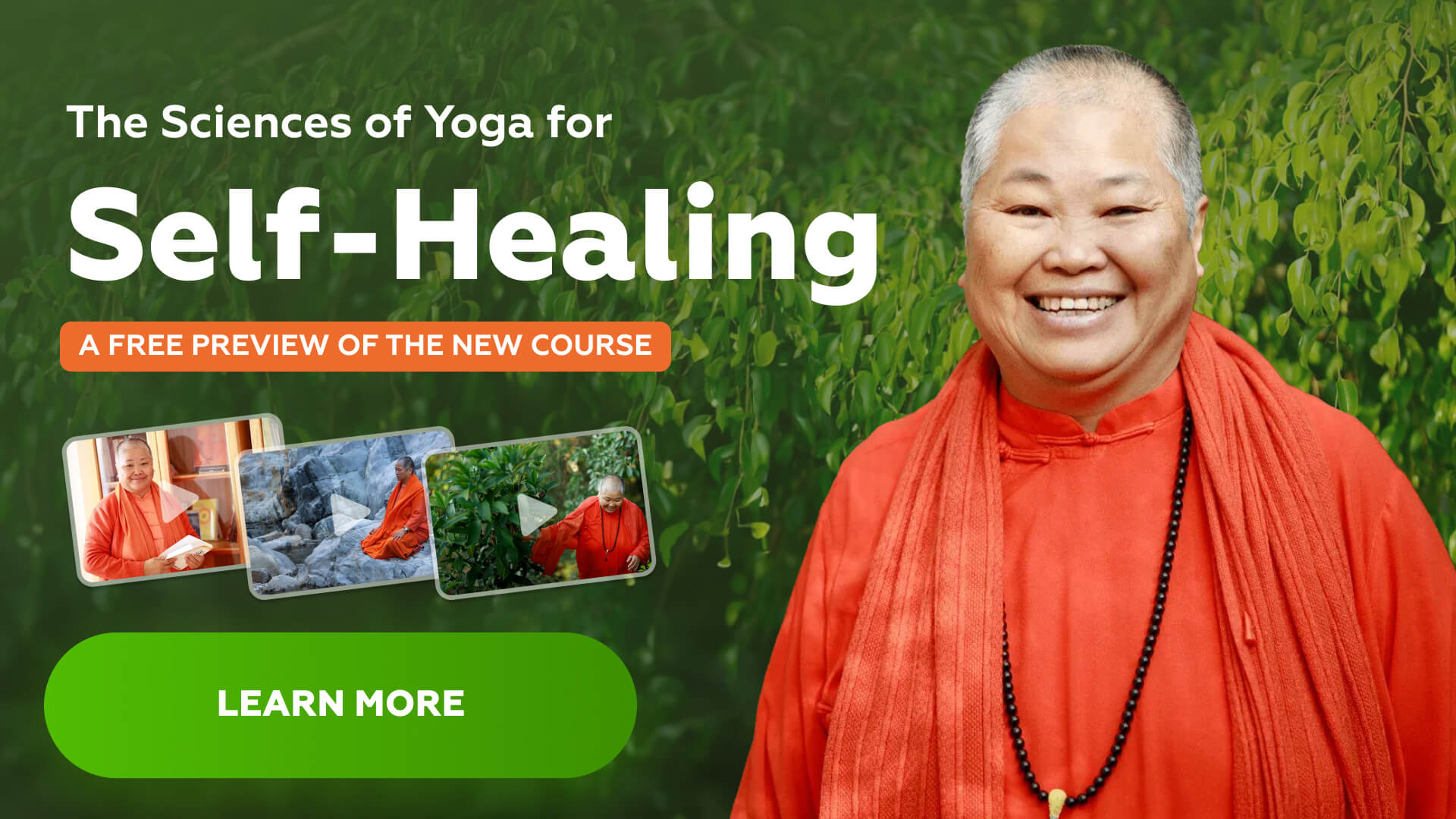yoga camp Satsang Fri, 9/17 8:25AM • 36:04
SUMMARY KEYWORDS
meditation, mind, yoga, meditate, karma yoga, attachment, meditation practice, happiness, yoga meditation, self- development , self-realization, meditation life, emotions, problem, mental pattern, meditation methods, seeking peace
Today I opened the book and the message is about meditation again. I’d like to talk about meditation and why we meditate.
Why meditate? What is Yoga meditation?
You need to understand why we meditate, then you can practice meditation for a long time and more seriously. The reason why we meditate, or we do yoga, is because in classical yoga, and yoga means meditation – meditation means yoga, there’s no separate thing. People think yoga means we’re doing some exercise and going to meditation is Zen meditation, or vipassana meditation or something separate. However, In the ashram, everything we do is included in the word meditation, and everything is preparation for meditation. Everything is meditation, everything is preparing you for meditation.
Why do you meditate, why are you more serious about following the discipline? Because the discipline of yoga and meditation – can you give me some answers? To seek enlightenment? It’s just a word, enlightenment. I want something more real, an answer that is more real. What’s the real reason? To calm the mind, thank you. Somebody else, please. To calm the mind – why? Because too many thoughts. Past, future, so much restlessness in the mind. Somebody else? To become conscious. You have taken the workshop this afternoon. Why do you want to become more aware, more conscious? It will create happiness? More correctly, you want to be happy in a stable manner.
Happiness is your true nature
If anyone is seeking for happiness and happiness is our true nature, we seek for our true nature. And the mind is always projecting different things. That’s why we run after that. We waste a lot of energy, and we don’t find what we want and then we think something’s wrong, and we change. Changing, changing, changing, changing of the mind – all the time changing. Always finding fault with something. But we find ourselves, very often times – tell me if I’m correct – often we find ourselves feeling like we are repeating the same kind of thought or dissatisfaction. The same. Then at that time, after some time – because in the beginning, we think that it is the fault of somebody, or something or the circumstances – we change, we change, and we find the same thing. And then we change again, and we find the same thing.
After some time like this, what do we do? We start to realize that it is not in the external condition. And with that, we ask ourselves the question – maybe it’s my mind? That’s how you start meditation – to seek to know your mind and seek to know the truth behind the mind. Because you’re starting to realize that the mind doesn’t give you the answer. Whenever you come up with a change, or with a different idea, it’s always coming from your mind. I repeat again, whatever you come to as a solution to your life, or whatever you complain about, this solution comes from your mind, that’s the problem The solution when it comes from your mind, will again be repeated. Because your mind is never ending, telling a different story. Different things that you want to try. You start to seek meditation when you understand that the mind is going through this pattern and you want to undo the pattern, you want to figure it out.
Seeking beyond the Pattern of the Mind
What is behind this pattern of the mind? the pattern of the mind can be very deep. You want to find out the truth behind this pattern of the mind. That’s why you meditate. Because if you have this thing repeated all the time, some kind of unanswered question that is not possible to answer, then you would find suffering, you’ll be suffering. And you always find some kind of solution to your suffering, but it’s always there. It’s a problem. That’s why eventually you turn within – you try to find, you know, maybe that’s the way my mind thinks, that it will always bring me to the same place. By this time, you will be seriously seeking within instead of always looking for something outside of yourself.
This question of why meditate is very, very important. Because if you have the right reason why you meditate, you will continue for a long time. If you don’t have the right reason why you meditate, for example, you want to meditate out of curiosity, or because some people or books influence you, it will not last long.
Only when you realize that your life always goes around and round and round and comes back to the same place, that you want to break through, you want to understand what is behind it and this is when you become more serious with meditation.
Do you agree? Yes.
There are a few techniques of meditation that you need to explore, and you need to practice, and you need to become very good at it.
Synthesis of Yoga
Swami Sivananda taught what we call the synthesis of yoga, and it is a combination of different yoga practices. That’s what you are learning here at the ashram. When you are immersed here, you learn these different methods and they are all intricately working together for that same goal. The goal is to bring you closer, to make your mind calmer and bring you closer to the realization of the happiness that is already there within you.
There are different methods of meditation. And it’s all in the book of Swami Vishnudevanandaji called ‘Meditation and Mantras’. For those who do not have the book, you can buy the book, you can read it and study. But the main thing is you need to have a teacher. To meditate by yourself alone is very difficult.
Karma Yoga
What are the different methods for meditation? Number one is called karma yoga meditation. That means how to meditate on your life itself , on your karma, so that your life is not a burden and your life is meaningful. That is called karma yoga meditation, but you have to turn your karma around, so that it becomes meaningful for you. And then it gives some kind of meaning to all your daily activity. That is meditation. Normally in normal life, you have work and home and work and traffic, and entertainment, all different things are separate, not integrated, not understood. But yoga is the method to transform you so that you can come closer to who you are, closer to the happiness that you are seeking. Karma yoga meditation is the method of selflessness, the method of turning your activity from fulfilling your personal gain to something selfless. The other way to say it, you have to give yourself out in order to find yourself. If you don’t give yourself out, you cannot find yourself. That’s something you need to meditate about. That means that you need to turn your karma into your dharma. It’s a lecture in itself. So, karma yoga meditation.
Bhakti Yoga
Then you have bhakti yoga meditation, that means how to turn your emotions into pure love. We talked about that a little bit yesterday, how to become devotional, how to channel your emotions so that your emotions are not going to repeat the pattern and make you feel stuck. Meditation is for you. It’s not for me or anybody. Meditation is for you in order for you to find yourself. You feel that your emotions are the problem, and you have a lot of attachments, and it creates a lot of pain. You get attached to people and things. Then you need to learn how to channel these emotions, so that they can give you more satisfaction or more happiness, more peace, more satisfaction for a long time. One hundred percent sure that this is what you want, but you don’t know how. Everyone at the bottom line, wants to have one hundred percent love and all the time. True?
Yoga gives you the answer, but you have to practice. You have to learn to observe your mind and see the problem. Because if not, then, like I said, it could repeat the same pattern. The same pattern of attachment and then forced detachment and attachment to something else and forced detachment and romantic ideas about this, romantic ideas about that, and pain. You don’t want that. Bhakti yoga meditation is teaching you how to love and to be fulfilled for a long time. One hundred percent love, this is what you’re looking for. You think that is possible? Who believes it is possible? You have to believe it is possible otherwise you will not even try. I believe it is possible, that’s how I tried. I practice it because I believe it’s possible. I believe that I deserve it. And I believe one hundred percent love exists. That is called turning this emotion into meditation. Bhakti yoga meditation. Study the saints lives, they tell their own stories and it is are very inspiring. They have beautiful devotion, so beautiful.
Raja Yoga meditation:
Raja Yoga meditation is what you practice at the ashram. You practice controlling the prana, you practice turning the senses inward, withdrawing of the senses, being more with yourself and less external. You practice concentration and calmness of mind. You practice one pointedness of mind so that the mind will be still and will not hide your treasure within.
The mind is like a snake guarding your treasure.
There was a snake that stationed in front of a cave. Inside the cave there is a treasure, and this person wanted to get to the treasure but there’s a snake guarding in front . The snake was guarding the door of the cave so no one cannot get in and get to the treasure. That person had a brilliant idea, he called a snake charmer, an Indian snake charmer with a flute. The snake charmer came and played the flute, beautiful flute music, and the snake started to listen. The snake shook its head, shook its body, charmed by the music. Then this person sneaked in the cave and got to the treasure.
Meditation is sneaking pass the limitations of the mind to get to enjoy your immortal spirit. Our mind is guarding us from enjoying the treasure of our soul. There are many different techniques that you have to do to charm the mind.
Concentration; Keeping the Mind Busy:
Here is the list of different methods of meditation that keep your mind busy in the right way.
- Focussing on a mantra (Japa) is one way to keep the mind still.
- Chanting outloud kirtan with the spirit of bhakti yoga is a way of charming the mind and keeping it somehow not obstructing you, your experience of connection.
- Keep yourself involved in Karma Yoga activities all the time. Our problem is not that we have too much work. The problem is we have too much time on our hands. – 50 years ago, things are different Before you had to chop wood, carry water, you know, light the lamp and then pull the water from the well and now everything is just push a button. You push the button, you have electricity, you push the button, the car drives by itself, you push it, and you have the laundry washed – everything is done automatically, so you have a lot of time.
- Keep the mind grounded: Do physical work like gardening at the same time leading a meditation life. Keep your life simple. This will keep your mind grounded. When you have a lot of time and stuff, the mind will have different needs, and different preoccupations. Don’t complain when your life is difficult. When your life is difficult, actually, you will have to chop wood, carry water. It will keep your mind very busy and actually, very healthy. The mind needs to concentrate so it doesn’t dream different things. Different ideas all the time and these ideas are non-essential.
- Travel and move less. During COVID pandemic time, people starts to distinguish between what is essential and what is non-essential. Even before all these lock downs and social distancing campaigns nowadays, we taught it in yoga.
- Reduce needs and distractions: The governments in pandemic time distinguish what is essential and what is non- essential. They close first non-essential things – they close the bars, entertainment places, the coffee shops, the movie theatres, the clothing stores, the gyms. [Unfortunately, yoga is under the same thing as the gym ]. But Yoga has said for a long time the same thing: Yoga says stay by yourself, don’t run around, be indoors, turn within, be content, be happy. Now the government says the same – I think the government should hire me to help people to stay indoors and be happy!.
- That is Raja yoga meditation. That one-pointed state of mind, concentrating so that your mind will increase the vibratory wavelength and then you start to find peace and happiness. That’s very simple. Don’t have too many distractions. Don’t have too much desire. If you have too much time, your mind doesn’t know what to do.
- Keep the emotions happy at the same time disciplining the mind.
Swami Vishnudevanandaji created this concept of a yoga vacation when he saw people left the city and go to the Laurentian mountains on the weekends. He understood that people needs to relax from their busy life and learn to integrate the yoga and meditation practice with their busy life at the same time.
- Recharge the prana with regulated Yoga life:
People comes back from their weekend get-away exhausted and they need to have a vacation from their vacation. That’s how he created this concept of having places like this where people can come, and they are on vacation but in a disciplined manner. They get up early, they exercise and they eat the right food and go to bed at the right time – That’s meditation the yoga way. When you try every day to control your mind, be more positive, be more focused, less distracted, less complaining, you are preparing yourself for meditation. Meditation is not just sitting with your eyes closed.
Self-Inquiry practice:
The last aspect of meditation is called self-inquiry. Do Self-inquiry practice so you don’t go on believing yourself to be something that you are not. Thought is very fast and you are what you think. But you have to develop the capacity to turn your mind inward, to watch your heart and watch your mind and question yourself and try to find a different way to think about yourself that will be more correct or more truthful.
That practice of turning the mind to watch itself, to observe itself and to switch the thoughts from non-essential to essential is called self-inquiry practice. You can do it anytime, anywhere, but you have to be aware of yourself and you have to be able to learn, to learn to think about the way you think. You cannot just think and believe everything that you think is true. Yoga says to you no, no, no. Learn to discriminate between the real and the not real, the Self and the not Self, the Permanent and the temporary. You need to be more aware, and you need to watch and contemplate your thoughts. Keep only the good positive thoughts in the mind, and the thoughts that are illusory, temporary, not true about yourself and others– let them go.
Summary
To summarize,
1/ think about why you meditate so that you break through the pattern of your mind, so that you will not be blocked by this pattern that will hide your true self and your true happiness. And so you can bring more light into your life – number one. Don’t blame anything outside. It is your own mind that brings you disease or health, happiness, or not. So, it’s like climbing a ladder. If you climb the ladder and you fall down and break your neck, it’s not the fault of the ladder it’s your fault. That means, how you use your mind is your skill. You don’t know how to use your mind and your mind creates problems for you – that’s the problem. Everyone needs to learn how to use their mind better. And that’s yoga teaching – how to use your mind better. How to slowly, slowly control the mind. You know why you meditate, so that you go to the root of the problems, and you can control the mind. Or, if you don’t like the word control, you can say that you are tuning the mind. What it means, tuning the mind? It is adjusting the mind to a higher wavelength, to a more correct way of thinking, the correct way of feeling that will last you a long time. You do this for yourself not for me, I do it for myself and I share. So why meditate? You need to ask yourself this question.
2/ The second thing is you need to learn the technique to meditate in daily life. You learn to meditate in your daily life activity – called karma yoga attitude, learn to be selfless. And to do your duty and let go of the results and don’t worry about what people think.
3/ Then, you learn to love correctly, selflessly, without too much attachment. Because attachment will make you suffer but love will make you feel happy. It’s up to you to figure it out – the difference between the two.
4/ Then you’ll need to learn to control the mind, turn inward, and to watch it. To control the mind means to calm it down.
5/ And then you need to do self-inquiry, you need to observe yourself and ask yourself where does this thought come from? Is it important? Does it really help me or not? And then things that are non-essential, let go of them. Keep only something important that lasts a long time, keep this thought. And anything that is not important and changes – let it go. Something that changes has no value, there’s no truth to it, but something that has value will last.
Additional story: Swami sita sharing story about how she chose community life :
Well, that’s it, any questions or anything? Enough? Time to go to bed. Thank you very much for being here. Thank you very much for setting up this beautiful place. Thank you very much for keeping this ashram so nice. It’s so valuable to see you sitting here. I’m able to sit here and share with you, with the Masters behind us, it’s all wonderful and the mosquitoes are not that bad. I used to live in the forest up here. I walked for half an hour to get there. When you cross the forest, there were so many mosquitos I had to wear a mosquito net over my head, so there is this round thing over my head when I walk through the forest. And mosquitos, not mosquitos but black flies. So, I know this forest very well.
I used to have a house in the forest, I lived there happily. We built a house and one day, I still remember, on top of this hill, I crossed the forest and came to the top of the hill, and I looked down and I looked at the ashram, which at that time was very small, half size – one-third of the size. And then I said to myself, because I have a house, the house is a big house – twenty-four feet by twenty-four feet, two stories. Big, beautiful, in the forest. And I said, why do you want to live in your own house, far away at the top of the hill? I still remember, the words come – “no, I want to live here in the ashram.” I followed that voice and moved in the ashram. And here, in the ashram, there’s no room sometimes. I had to live many times in the office, many times in the laundry room. And then one time I went shopping for something and I came back, and my room was gone, they gave my room to the guest! I didn’t mind, but the problem was somebody moved my alter! I was so mad. Then I realized my attachment again, when you’re upset at something it’s always because of your attachment, it’s nothing else. I realized, well, whatever I want does not sit on this table, it’s not the altar, the alter is only a symbol of something that you hold dear.
That was the story of my choice of wanting to live in the ashram when there is no room for me instead in my own house and own space. Community life has something very good. Even though you feel that you don’t have time and space when you have to share but it’s actually very beautiful.

Swami Sitaramananda is a senior acharya of the International Sivananda Yoga Vedanta Centers and is director of the Sivananda Ashram Vedanta Yoga Farm, California and the Sivananda Yoga Resort and Training Center, Vietnam. She is acharya of China, Taiwan, and Japan as well. Swamiji is the organizer and teacher of the Sivananda Yoga Health Educator Training (SYHET) program, an 800-hour program on yoga therapy, accredited by the International Association of Yoga Therapists (IAYT).
Swami Sitaramananda is the author of “Essentials of Yoga Practice and Philosophy” (translated in Chinese, Japanese, Vietnamese, and Russian), “Positive Thinking Manual”, “Karma Yoga Manual”, “Meditation Manual”, “Swamiji Said, a collection of teachings by Swami Vishnu” in His Own Words. She is responsible for the Vietnamese translation of “Completed Illustrated Book of Yoga” (CIBY) and “Meditation & Mantras” by Swami Vishnu. Many of her video & audio lectures on Yoga life, philosophy, and psychology as well as articles and webinars can be found on this website.
Swami Sita is an ardent supporter of the integration of the Vedic sciences such as Vastu, Jyotish, Ayurveda, Yoga and Vedanta. She is an international teacher of the Sivananda Yoga Teachers’ Training Courses and Advanced Yoga teachers’ Training courses, as well as Meditation and Vedanta & Silence Courses both in Sivananda Ashrams in Vietnam and in Grass Valley, CA.




